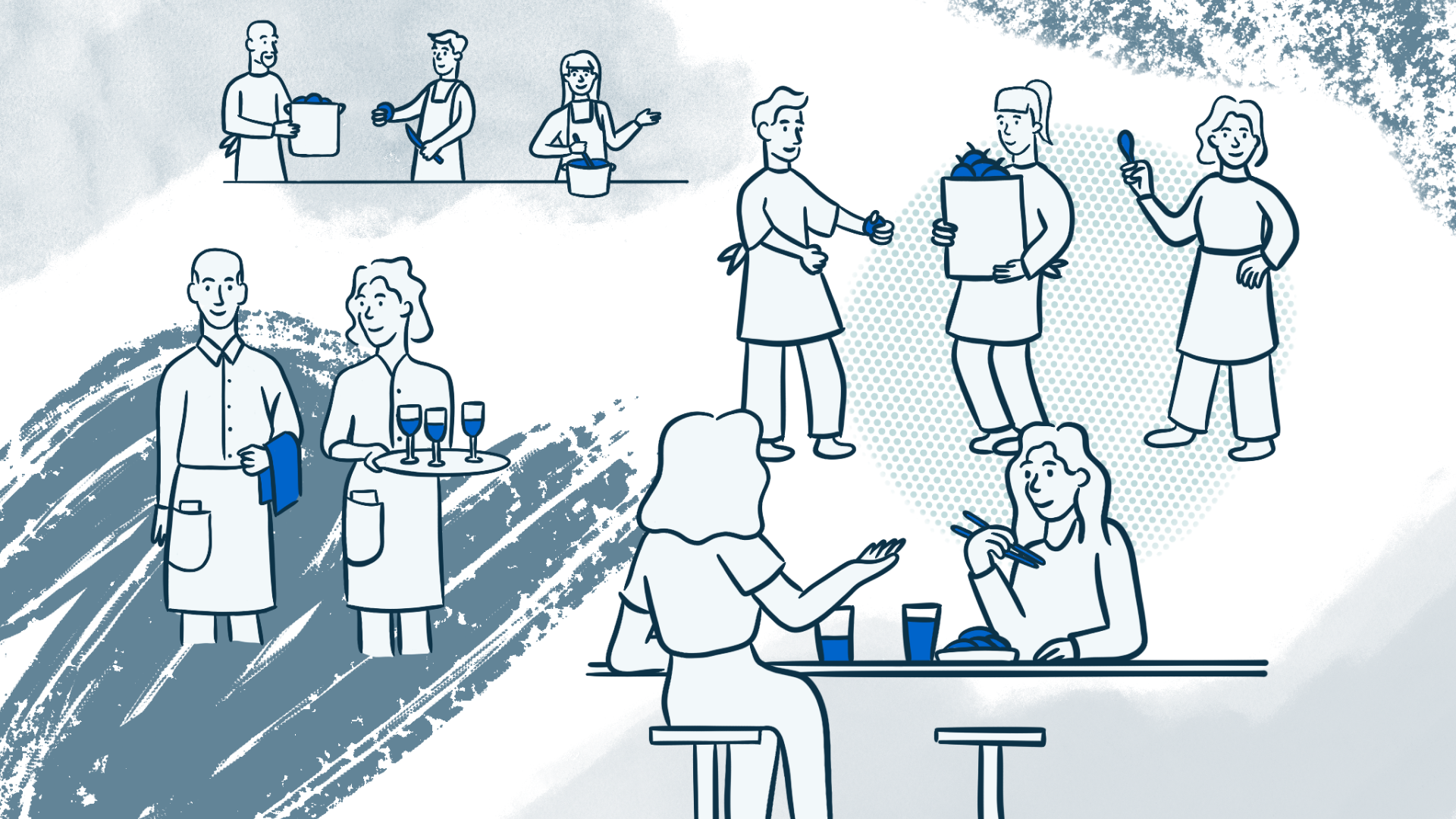DESIGN AND TECHNOLOGY GUIDES
A guide to understanding the principles of service design
Service design is a comprehensive, systematic approach to meeting user needs and making experiences more competitive. Rather than playing “whack a mole” with updating features and UI components, service design looks at your users’ entire experience of your brand and helps identify the most effective areas for growth and change.
Service design is core to our work at Think Company. We’ve found that a service design approach to a digital problem gives us a more holistic view of where the digital “piece” fits. This perspective ensures that the entire user experience (both digital and non-digital) is more consistent and ultimately successful.

What is service design?
We all experience services all day long, and as a result, we intuitively know what good and bad services feel like (think about the difference in interacting with Disney vs. the DMV). Whether you think of yourself as offering a service or not, if you produce anything that can be engaged or interacted with, service design can help you make better decisions.
Service design is an approach that facilitates a holistic understanding of your offering and empowers you to make that entire experience better for your users, employees, and customers.
A restaurant can be a helpful analogy. Think of all the staff working together to support a customer’s dining experience: hosts, servers, chefs, management, bussers, dishwashers, etc. Service design looks at how each of these roles interacts with the others to create a meaningful, delicious, delightful experience for a guest.
Does a server know what to do when a diner has an allergy? Is the seating process efficient, and are the relevant parties (server, bartender, etc.) notified when it happens? Does kitchen staff know what to order and when to minimize waste and maximize budget? Service design examines interactions like these to produce a blueprint for optimizing and enhancing the customer’s experience and the needs of the business.
The principles of service design
Five main principles guide the service design process. These ideals guide the process outlined in the next section and are hallmarks of the work.
People-Centric
Maybe more than anything else, service design is centered around discovering people’s needs and desires related to your offering—and building features, products, and support structures that meet those tangible needs.
Collaborative
Service design is cross-functional, taking multiple practices into account. From UX and UI design to content strategy, policy, customer support, development, and even legal, service design works across skill sets and departments.
Iterative
The key deliverable of service design work is a “blueprint” of what’s happening today and what we want to happen in the future—what to build and how to build it. This creates a vision and aligns the team as they iterate to create the best possible offering for users.
Sequential
A core tenet of service design is understanding the sequence of events your user is going through. It examines how one action begets another, so you can look at how users are getting where they want to go—or where exactly they’re getting lost.
Holistic
An all-encompassing perspective is the hallmark of service design work. You gain a bird’s-eye view of your entire offering and can make targeted adjustments based on this perspective.

The components of service design
Service design has four primary components, which affect and respond to the others. The service design deliverable—the blueprint—gives you insight into the relationship between these components. Understanding this relationship allows you to see how changing something in one component will affect the others, and you can do this strategically while you work to improve your product or experience.
People
This component focuses on the people who use—or enable—your service. These people are usually customers, employees, spouses, family members, etc.
Products
These are the tools and technologies that are a part of your service. These might be products customers use to engage with the service or tools that support staff leverage to enable the service.
Process
This component looks at the stages or steps that customers, employees, and more, move through to engage with your service. It could be process steps that individuals choose to move through, or they might be steps they must move through.
Partners
These are third-party support structures or what we sometimes call “customer advocates.” This component encompasses the people who enable the service experience but are not directly involved—the people who make the service happen.
Benefits of service design
Service design benefits any team looking to create meaningful, successful products and experiences. Service design’s big picture, holistic approach helps to break down silos while keeping teams and companies relevant and innovative. And experiences viewed and analyzed by a service design team often see increased customer loyalty and more profound relationships over time. It’s work that affects—and benefits—everyone internally and externally.
Takeaways on service design
Service design helps you go from thinking you know how your offering works to knowing exactly how it works in the real world. A service design perspective allows your team to look beyond the product itself and informs where changes will be made—and ultimately make those changes more effective. This can look like product updates but can also influence policy and non-digital changes.
Service design gives you a holistic understanding of your offering and empowers you to improve the entire experience for your users, employees, and customers.
Want to learn more about the latest in design and technology leadership? Sign up for the Think Company quarterly newsletter today.